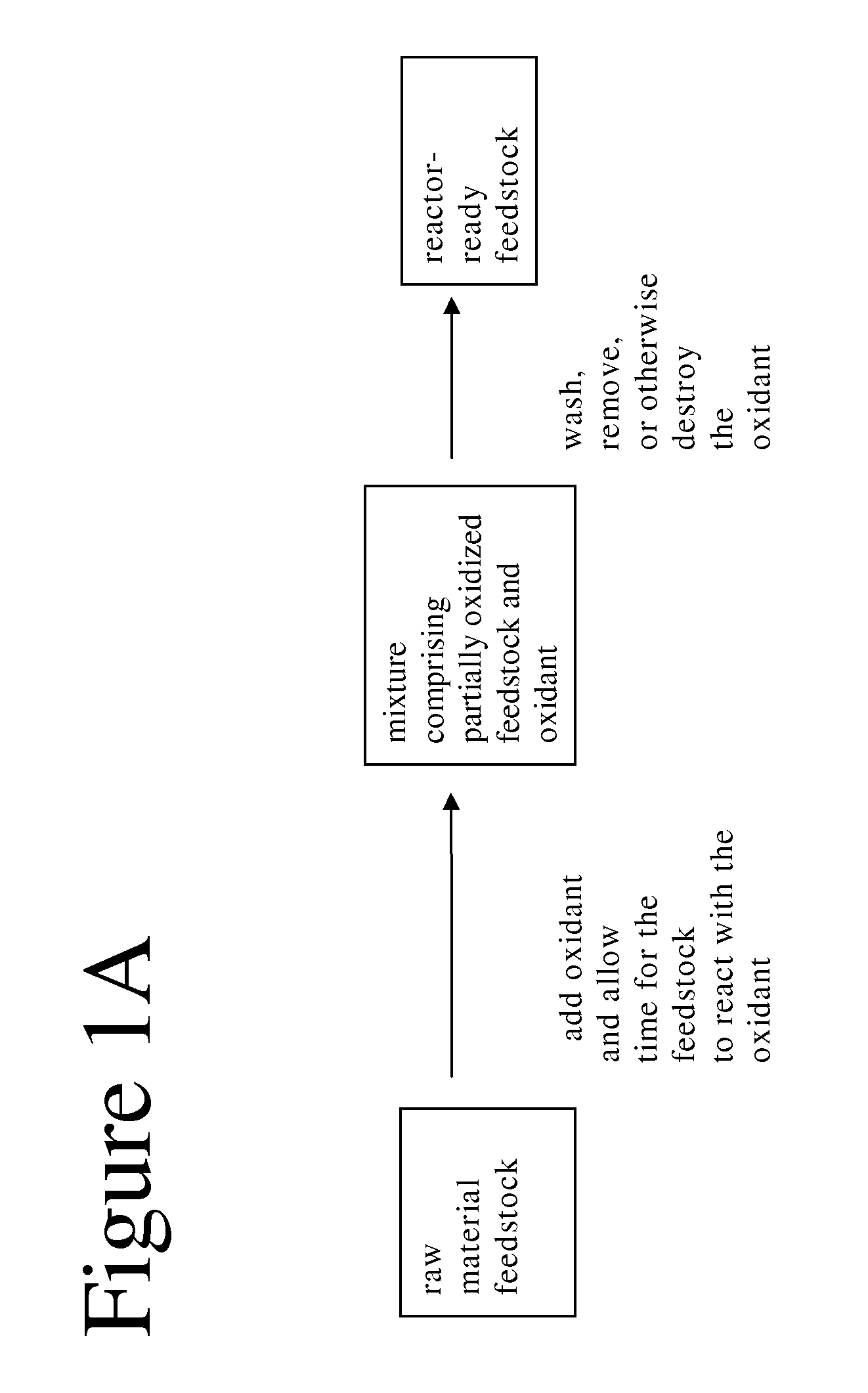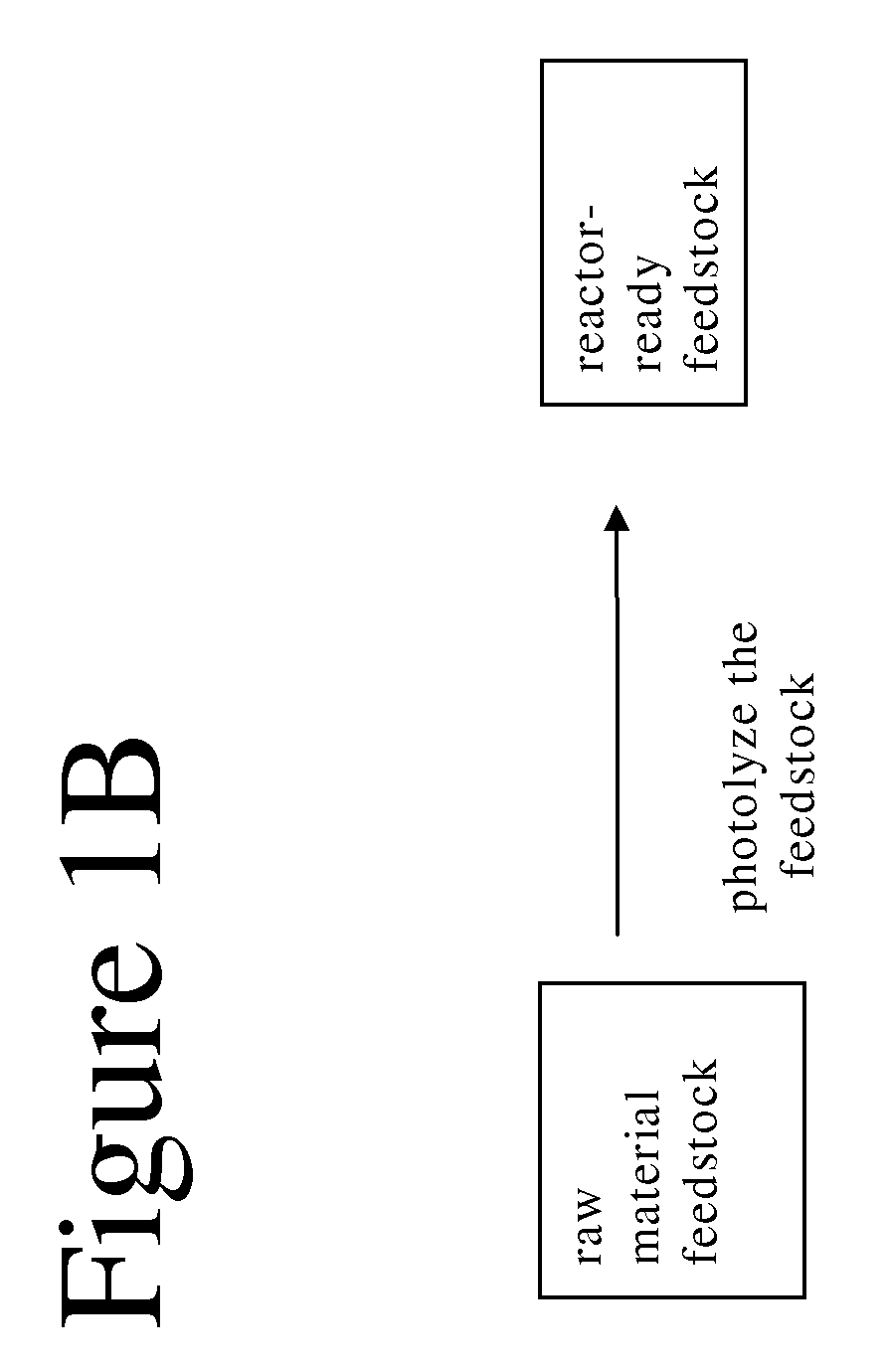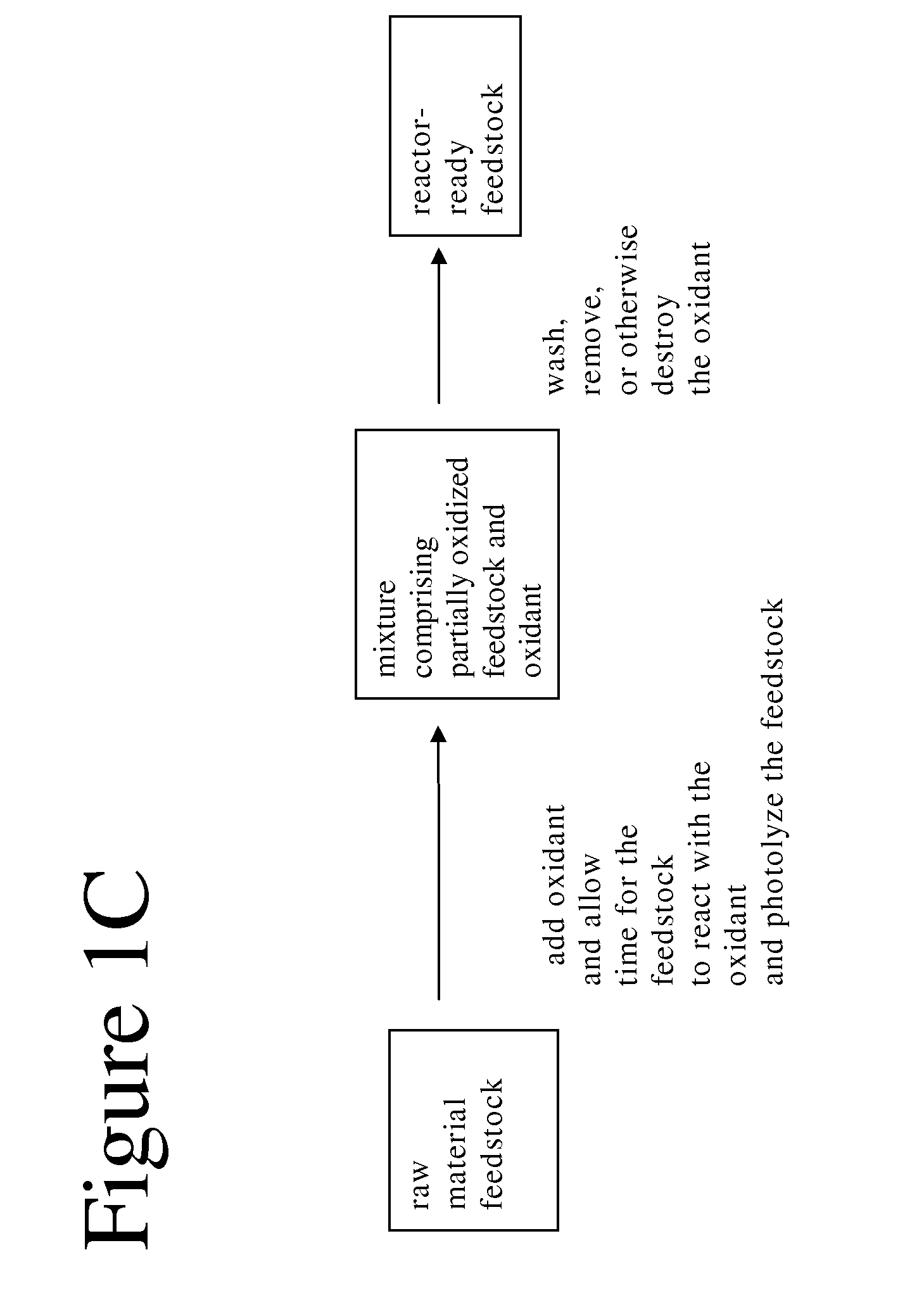Method for pretreatment of cellulosic and lignocellulosic materials for conversion into bioenergy
a technology of lignocellulosic materials and pretreatment methods, which is applied in the direction of energy-based wastewater treatment, enzymology, organic compounds of the group 3/13 element, etc., can solve the problems of unsatisfactory foaming from peroxide decomposition, and one skilled in the art would likely not recognize the difficulty of removing or destroying peroxide in the pretreated product, so as to reduce the volume and mass of waste products, the effect of reducing
- Summary
- Abstract
- Description
- Claims
- Application Information
AI Technical Summary
Benefits of technology
Problems solved by technology
Method used
Image
Examples
Embodiment Construction
[0073]Units, prefixes, and symbols may be denoted in their SI accepted form. Numeric ranges recited herein are inclusive of the numbers defining the range and include and are supportive of each integer within the defined range. Unless otherwise noted, the terms “a” or “an” are to be construed as meaning “at least one of.” The section headings used herein are for organizational purposes only and are not to be construed as limiting the subject matter described. All documents, or portions of documents, cited in this application, including but not limited to patents, patent applications, articles, books, and treatises, are hereby expressly incorporated by reference in their entirety for any purpose, and are understood to represent methods and materials generally known to those skilled in the art.
[0074]The practice of the present invention will employ, unless otherwise indicated, conventional techniques of biochemistry, chemistry, botany, and biology, which are within the skill of the ar...
PUM
| Property | Measurement | Unit |
|---|---|---|
| wavelengths | aaaaa | aaaaa |
| wavelengths | aaaaa | aaaaa |
| wavelengths | aaaaa | aaaaa |
Abstract
Description
Claims
Application Information
 Login to View More
Login to View More - R&D
- Intellectual Property
- Life Sciences
- Materials
- Tech Scout
- Unparalleled Data Quality
- Higher Quality Content
- 60% Fewer Hallucinations
Browse by: Latest US Patents, China's latest patents, Technical Efficacy Thesaurus, Application Domain, Technology Topic, Popular Technical Reports.
© 2025 PatSnap. All rights reserved.Legal|Privacy policy|Modern Slavery Act Transparency Statement|Sitemap|About US| Contact US: help@patsnap.com



